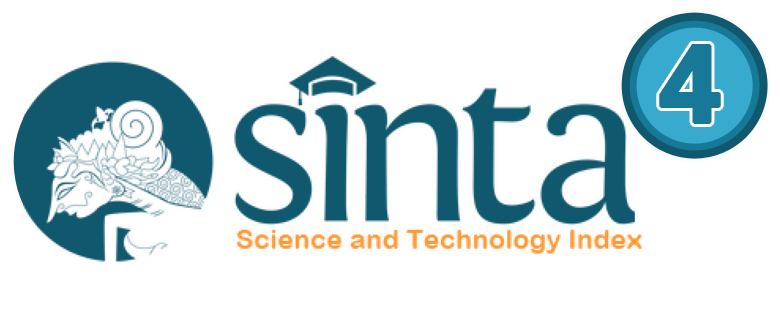KAJIAN PENERAPAN SISTEM INFORMASI KARYAWAN BERBASIS WEB BERDASARKAN PENDEKATAN TAM
Abstract
The purposes of this study are to find the dominant factors which correlate and influence the level of technology acceptance, particularly Web-Based Employee Information System to its end users, of which are the employees of Bina sarana Informatika (BSI), and to know how an accepted model of new technology in a form of Web-Based Employee Information System is emplemented in a tertiary education institution.
The Web-Based Employee Information System used in this study is one of information systems implemented by BSI, all of which were web-based designed that require an internet browser, such as: Internet Explorer or Mozilla Firefox. It is computer-accessible to employees both from within or outside BSI campus since the system is connected with local computer network via both intranet as well as internet facilities. This Web-based Employee Information System, which is stored in a webserver of the Internet, has a domain address “bsi.ac.id” and it is accessible via BSI website at http://www.bsi.ac.id. Some facilities available are: employee data processing, academic service, prospective students information, courses and programs, Jabatan Fungsional Dosen.
The instrument for this study is questioner with Semantic Differential Scale ranging from 1 to 7, representing answers ranging from ‘extremely disagree’ to ‘extremely agree’. This study also makes use of both Technology Accepted Model (TAM) to describe the relationship between factors influencing the use of Web-Base Employee Information System and Structural Equation Modelling (SEM) to analyse data. The software used are AMOS and SPSS for Mindows 16.0.1 version.
The result of this study is useful for identifying and putting in mind the role of Web-Based Employee Information System, which is accessible at http://www.bsi.ac.id, as a facility to support employees’ working accomplishment.
Key words : Web-Based Employee Information System, Technology Accepted Model (TAM), Structural Equations Modelling (SEM), Analysis of MOment Structure (AMOS)
Full Text:
PDFReferences
Davis, Fred D. 1989. Perceived Usefulness, Perceived Ease of Use and User Accepted of Informations Technology. Management Information System Quarterly.
Ghozali, Imam. 2003. Model Persamaan Struktural - Konsep dan Aplikasi dengan Program AMOS Ver 5.0. Semarang : BP UNDIP.
Godi, Muhamad Ikbal. 2007. Faktor-faktor yang Mempengaruhi Keberhasilan Penggunaan Knowledge Management System (KMS) :
Studi Kasus Penggunaan KAMPIUN Sebagai KMS di PT. Telkom. Tesis. Jakarta : Universitas Budi Luhur.
Hair, J.F. 1998. Multivariat Data Analyst, New Jersey : Prentice Hall.
Herlawati. 2007. Faktor-faktor yang Mempengaruhi Perilaku Karyawan dalam Penggunaan Sistem Informasi Perpajakan Berbasis Web Berdasarkan Pendekatan TAM : Studi Kasus di KPP Cikarang Satu
– Bekasi. Tesis. Jakarta : Universitas Budi Luhur.
HM, Jogiyanto. 2006. Analisa Desain Sistem Informasi : Pendekatan Terstruktur Teori dan Praktek Aplikasi Bisnis, Edisi Ketiga, Cetakan Kedua, Yogyakarta : Andi.
McLeod, Raymond. 2004. Sistem Informasi Manajemen, Edisi Kedelapan, Jakarta : PT. Indeks.
Money, W., Turner, A. 2004.Aplications of the Technology Accepted Model to a Knowledge Management System, In Proceedings of the 37th Hawaii
International Conference on System Sciences.
Nasution, Fahmi Natigor. Penggunaan Teknologi Informasi Berdasarkan Aspek Perilaku (Behavioral Aspect), USU Digital Library, http://library.usu.ac.id/download/fe/akuntansi-fahmi2.pdf (Diakses 20 Mei 2008)
Siregar, Syafarudin. 2004. Statistik Terapan untuk Penelitian. Jakarta : Grasindo.
Tanenbaum, Andrew S. 2000. Jaringan Komputer, Edisi Indonesia, Jilid Satu, PT. Prenhallindo dan Pearson Education Asia Pte. Ltd.
Wibowo, Arief. 2006. Kajian Penerapan Sistem Informasi Akademik Berbasis Web Berdasarkan Pendekatan TAM : Studi Kasus di Universitas Budi Luhur, Tesis, Jakarta : Universitas Budi Luhur.
Widodo, Prabowo Pudjo. 2006. Aplikasi SEM : Management Informatioan System (MIS) & Technology Accepted Model (TAM), Jakarta : Universitas Budi Luhur.
____________________. 2006. Statistika : Analisis Multivariat, Seri Metode Kuantitatif, Jakarta : Universitas Budi Luhur.
____________________. 2006. Petunjuk Pengoperasian AMOS, Jakarta :
Universitas Budi Luhur.
Wothke, W. Nonpositive definite matrices in structural modeling. In Bollen, K.A. & Long, J.S, Testing Structural Equations Models (pp. 256-293).
DOI: https://doi.org/10.31294/p.v11i3.4731
Copyright (c) 2009 Mochamad Wahyudi

This work is licensed under a Creative Commons Attribution-ShareAlike 4.0 International License.








